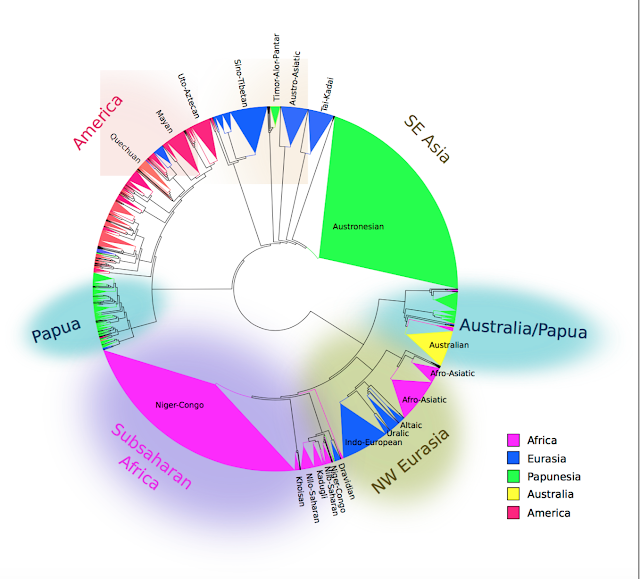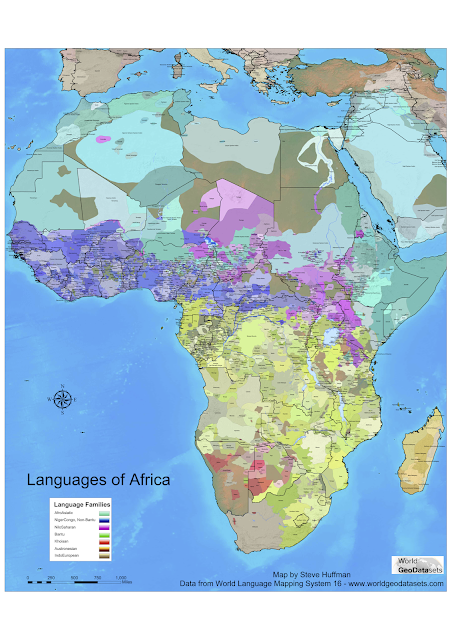Linguistic relativism and data visualisation
This is a sweet little story by a data visulator by the name of Muyueh Lee (李慕約). It's about comparing the entries in wikipedia for different color terms between Chinese and English. The link will take you to a site which will elegantly tell you a little story about the data and what he's found.
He starts of with:
Language represents our view of the world, and knowing its limits helps us understand how our perception works.
Now, this is true and very interesting. There are some problems with this study, but as a way of showing data visualisation and what one can do with freely available data online it's great. There is so much data out there that we can do interesting things with.
The story he tells is about color terms, and it just so happens to be one of the most well-reserach areas of lexical typology (systematic cross-linguistic comparison of words). It all started with Berlin and Kay's work on basic color categories, and then there's been lots of good and interesting research since then. I'm afraid I cannot provide you with a satisfactory history of all that research her enow. Down here is a little simplified representation of their research, it's an implicational chain where languages of the categories to the right also have all the categories of the previous stages to the left. I.e. you won't have "orange" if you don't also have "red". If you're interested in basic color categories read this and look at the surveys website here.
If you're curious about linguistic relativism in general, I' also like to recommend this short quote and these articles
Levinson, S. C., & Majid, A. (2009). The role of language in mind. In S. Nolen-Hoeksema, B. Fredrickson, G. Loftus, & W. Wagenaar (Eds.), Atkinson and Hilgard's introduction to psychology (15th ed., pp. 352). London: Cengage learning. (free PDF here)
Majid, A., & Levinson, S. C. (2011). The senses in language and culture. The Senses & Society, 6(1), 5-18 (free PDF here)
He starts of with:
Language represents our view of the world, and knowing its limits helps us understand how our perception works.
Now, this is true and very interesting. There are some problems with this study, but as a way of showing data visualisation and what one can do with freely available data online it's great. There is so much data out there that we can do interesting things with.
The story he tells is about color terms, and it just so happens to be one of the most well-reserach areas of lexical typology (systematic cross-linguistic comparison of words). It all started with Berlin and Kay's work on basic color categories, and then there's been lots of good and interesting research since then. I'm afraid I cannot provide you with a satisfactory history of all that research her enow. Down here is a little simplified representation of their research, it's an implicational chain where languages of the categories to the right also have all the categories of the previous stages to the left. I.e. you won't have "orange" if you don't also have "red". If you're interested in basic color categories read this and look at the surveys website here.
If you're curious about linguistic relativism in general, I' also like to recommend this short quote and these articles
Levinson, S. C., & Majid, A. (2009). The role of language in mind. In S. Nolen-Hoeksema, B. Fredrickson, G. Loftus, & W. Wagenaar (Eds.), Atkinson and Hilgard's introduction to psychology (15th ed., pp. 352). London: Cengage learning. (free PDF here)
Majid, A., & Levinson, S. C. (2011). The senses in language and culture. The Senses & Society, 6(1), 5-18 (free PDF here)




Comments
Post a Comment